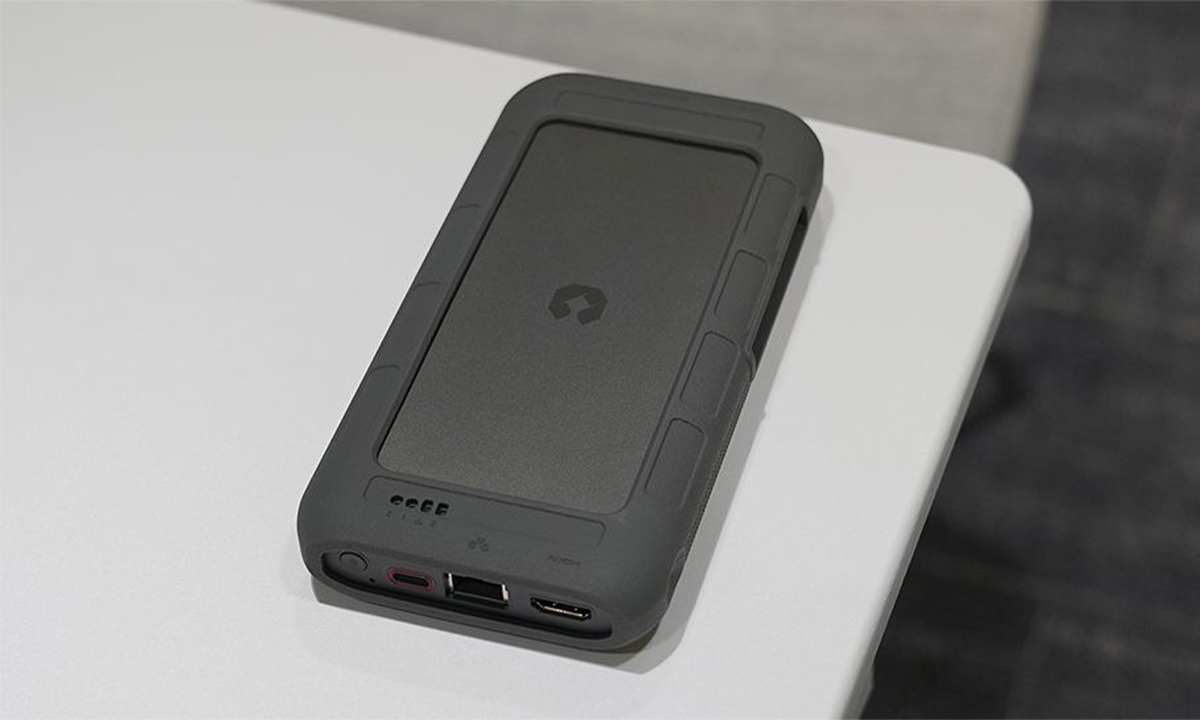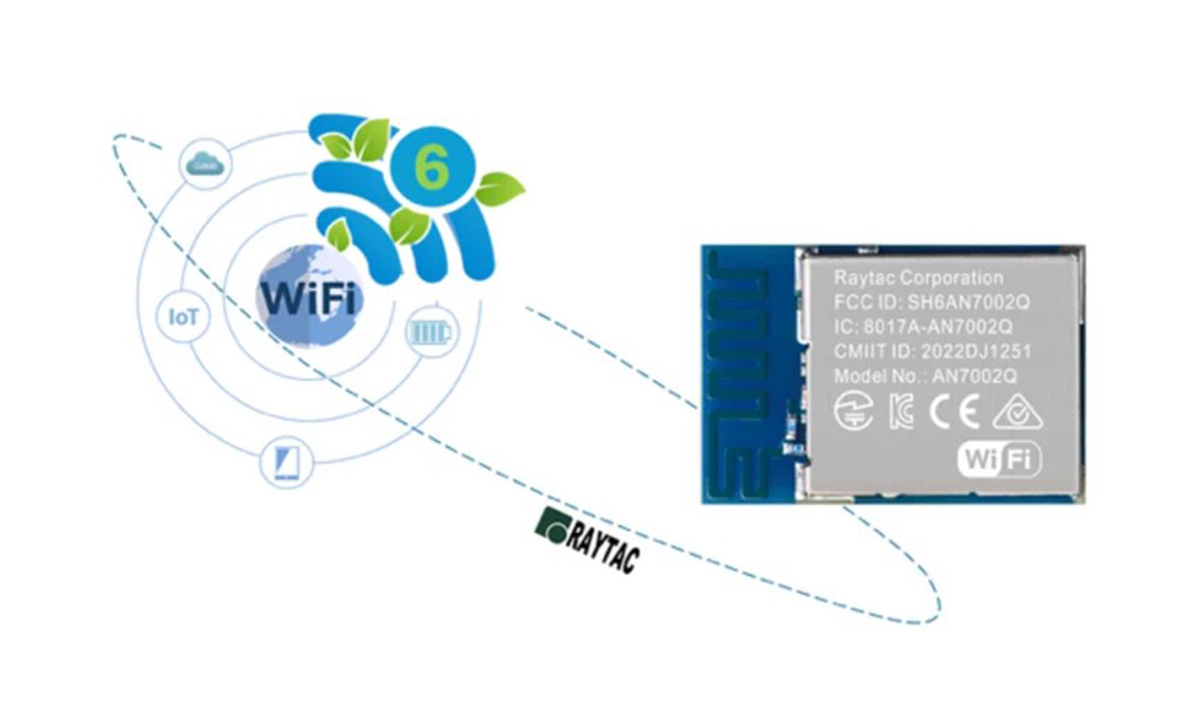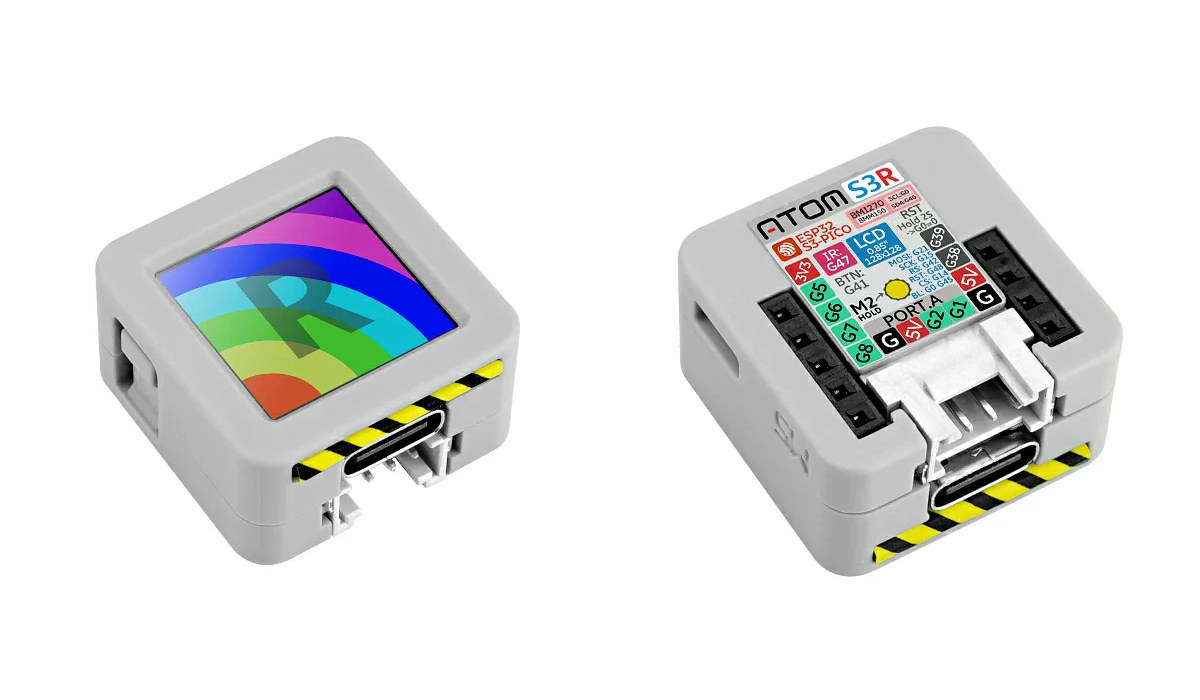The UnifyDrive UT2 is a compact network-attached storage (NAS) device powered by the Rockchip RK3588C processor. It supports WiFi 6, and Bluetooth, and has multiple ports for connectivity. Equipped with two M.2 2280 slots for PCIe 3.0 NVMe SSDs, it offers up to 16 TB of storage. The device can connect to networks via 2.5 GbE or WiFi and also function as a WiFi access point, allowing file transfers even without an internet connection. A built-in battery provides uninterruptible power supply (UPS) functionality, enabling continued operation when unplugged. Designed for both home and mobile use, the UnifyDrive UT2 offers AI-driven storage management in a portable form factor. Its versatile networking options allow remote access, backups, and on-the-go file transfers. Despite its size, it delivers robust functionality, serving as a full-featured NAS solution in a variety of settings. I didn’t find any significant differences between the Rockchip RK3588 and RK3588C. This […]
Raytac AN7002Q – A smaller nRF7002 Wi-Fi 6 module for industrial IoT applications
IoT solutions company Raytac has introduced the AN7002Q Wi-Fi 6 module series, which integrates Nordic Semiconductor’s nRF7002 chipset and is designed for Industrial IoT, smart home, healthcare, consumer electronics, and automotive applications. They can be paired with Raytac’s MDBT53 Bluetooth LE modules based on the nRF5340 multiprotocol SoC, supporting Wi-Fi and Bluetooth LE solutions. The AN7002Q is a low-power Wi-Fi 6 module supporting dual-band 2.4 GHz and 5 GHz operation with a maximum PHY data rate of 86 Mbps (MCS7). It is compatible with IEEE 802.11ax, a/b/g/n/ac standards, and connects to a host SoC or MCU via SPI or QSPI interfaces. The module also supports coexistence with Bluetooth LE, Thread, and Zigbee systems, making it ideal for IoT applications. Previously, we covered the Abluetech PTR7002, a low-power wireless module based on the Nordic Semiconductor nRF7002. The PTR7002 has a slightly larger size and offers more GPIO options, while the AN7002Q […]
ESP32-C6 WiFi 6 and Bluetooth 5.0 USB-C development board integrates 1.47-inch TFT LCD Display
Waveshare has introduced the ESP32-C6-LCD-1.47 development board powered by an ESP32-C6 RISC-V microcontroller with WiFi 6 and Bluetooth 5 connectivity and equipped with a 1.47-inch display with a 172×320 resolution. With a 4MB flash, an RGB LED, and a microSD card slot for extra storage, this board is suitable for projects that need a compact display, low power consumption, and wireless connectivity such as AIoT applications and human-machine interfaces (HMI). Earlier this month, we covered the ESP32-S3 USB dongle, another development board from Waveshare designed for HMI applications with the same 1.47-inch display with a 172×320 resolution, but a USB Type-A port instead of the USB-C port found in the model covered today. In the past, we’ve written about other ESP32-based development boards for HMI applications, including the LILYGO T-HMI, ESP32-S3-Touch-LCD-4.3B, and Waveshare’s ESP32-S3 LCD Driver Board supporting both square and round displays. Feel free to check them out if […]
M5Stack ESP32-S3-Pico-based devkits: ATOMS3R with 0.85-inch color display, and ATOMS3R Cam with VGA camera
M5Stack ATOMS3R and ATOMS3R Cam are two tiny devkits based on ESP32-S3-Pico system-in-package and a similar design but the first one features a 0.85-inch color color IPS display, while the other is equipped with a GC0308 VGA camera. Both modules measure just 24x24mm with a thickness of around 13mm, integrate BMM150 and BMI270 motion sensors, offer GPIO expansion through female headers and a grove connector, and feature an infrared transmitter and a USB Type-C port for power and programming. Those are the second devkits based on the ESP32-S3-Pico SiP after we covered the tiny OMGS3 module earlier this week. M5Stack ATOMS3R with display ATOMS3R specifications: SiP – Espressif ESP32-S3-PICO-1-N8R8 SoC ESP32-S3 dual-core Tensilica LX7 up to 240 MHz with 512KB SRAM, 16 KB RTC SRAM Wireless – WiFi 4 and Bluetooth 5 LE + Mesh Memory – 8MB QSPI PSRAM Storage – 8MB QSPI flash Display – 0.85-inch color IPS screen […]
Mayhem v2 expansion for Flipper Zero adds Wi-Fi, BLE, camera, microSD card slot, and NRF24 or CC1101 radio support
Erwin Ried‘s Mayhem v2 is an all-in-one ESP32 and NRF24L01-based expansion board designed for Flipper Zero. This board adds Bluetooth and Wi-Fi through an ESP32-S module, features 2MP camera with flashlight, a microSD card slot, and support for either an NRF24L01 module (for sniffing and mousejacking) or a CC1101 module (for external radio communication). These features make this Flipper Zero add-on board useful for WiFi and Bluetooth penetration testing, motion detection, QR code reading, and as a nanny cam with remote access. Previously we have written about similar expansion boards like the Flipper Zero ESP8266 Deauther which adds de-authentication capabilities and the Flipper Add-On CANBus which can be used to sniff, send, and log CAN bus packets directly from the Flipper Zero. Feel free to check those out if you are interested in those tools. Mayhem v2 Flipper Zero add-on board specification Wireless Module – ESP32-S WiFi 802.11 b/g/n + […]
nRFBOX V2 ESP32 wireless hacking tool can scan, analyze, spoof, and jam the whole 2.4GHz spectrum
CiferTech has recently introduced the nRFBOX V2 ESP32-based wireless hacking tool designed for spectrum analysis, jamming, BLE device emulation, and more. The device is built around an ESP32-WROOM-32U module and includes an NRF24 module covering the whole 2.4GHz spectrum. Additionally, the device has a 0.96-inch OLED display, a five-way microswitch control pad, and a WS2812 RGB LED for feedback. The device can also be operated with a single 3.7V lithium battery, and that batter’s charging is handled by a TP4056 charging IC. All these features make this device useful for wireless security testing, educational environments, research, and hobbyist projects. Previously we have written about similar portable hacking tools like the DSTIKE Deauther Watch X, the HackBat pen-testing device, and the popular Flipper Zero wireless hacking tool. Feel free to check those out if you are looking for similar products. nRFBOX V2 specifications Microcontroller – ESP32-WROOM-32U with ESP32 dual-core wireless microcontroller […]
ESP32-S3 USB dongle integrates 1.47-inch TFT LCD display
Waveshare ESP32-S3-LCD-1.47 is an ESP32-S3 USB dongle with Wi-Fi, Bluetooth, high-capacity Flash and PSRAM, and a 1.47-inch LCD. Additionally, it has an onboard microSD card slot used for storage and some RGB LEDs for visual feedback. All these features make this tiny device suitable for applications like interactive displays, IoT devices, hardware pentesting, and more. Previously we have written about the LILYGO T-HMI a similar ESP32-S3-based development board built for HMI applications, as well as the ESP32-S3-Touch-LCD-4.3B and Waveshare ESP32-S3 LCD Driver Board, but it must be the first time we’ve come across a USB dongle-like ESP32-S3 board with an integrated display. ESP32-S3-LCD-1.47 specifications: Wireless MCU – Espressif Systems ESP32-S3R8 CPU – Dual-core Tensilica LX7 @ up to 240 MHz with vector instructions for AI acceleration. Memory – 512KB RAM, 8MB PSRAM Storage – 384KB ROM Connectivity – 2.4 GHz WiFi 4 and Bluetooth 5.0 LE with support for long-range, up […]
Bluetooth 6.0 features accurate two-way ranging using Channel Sounding, latency reduction, improved scanning efficiency, and more
The Bluetooth Special Interest Group (SIG) has just announced the release of the Bluetooth 6.0 Core Specification with features and feature enhancements that include Bluetooth Channel Sounding for two-way ranging between BLE devices, decision-based advertising filtering and monitoring advertisers to improve device scanning efficiency, an enhancement to the Isochronous Adaptation Layer (ISOAL) for lower latency and higher reliability, the LL extended feature set, and a frame space update for throughput optimization. Bluetooth 5.4 was released as a minor update mostly adding electronic shelf label (ESL) support in February 2023, or about 18 months ago, but Bluetooth 6.0 is a major update with the most notable feature being Bluetooth Channel Sounding to enable two-way ranging between two Bluetooth LE devices. It’s not the first time we’ve heard about “Bluetooth Channel Sounding” for distance measurements as it was implemented in WiFi 7/6 and Bluetooth 5.4 chipsets such as Synaptics SYN4382 and Broadcom […]










